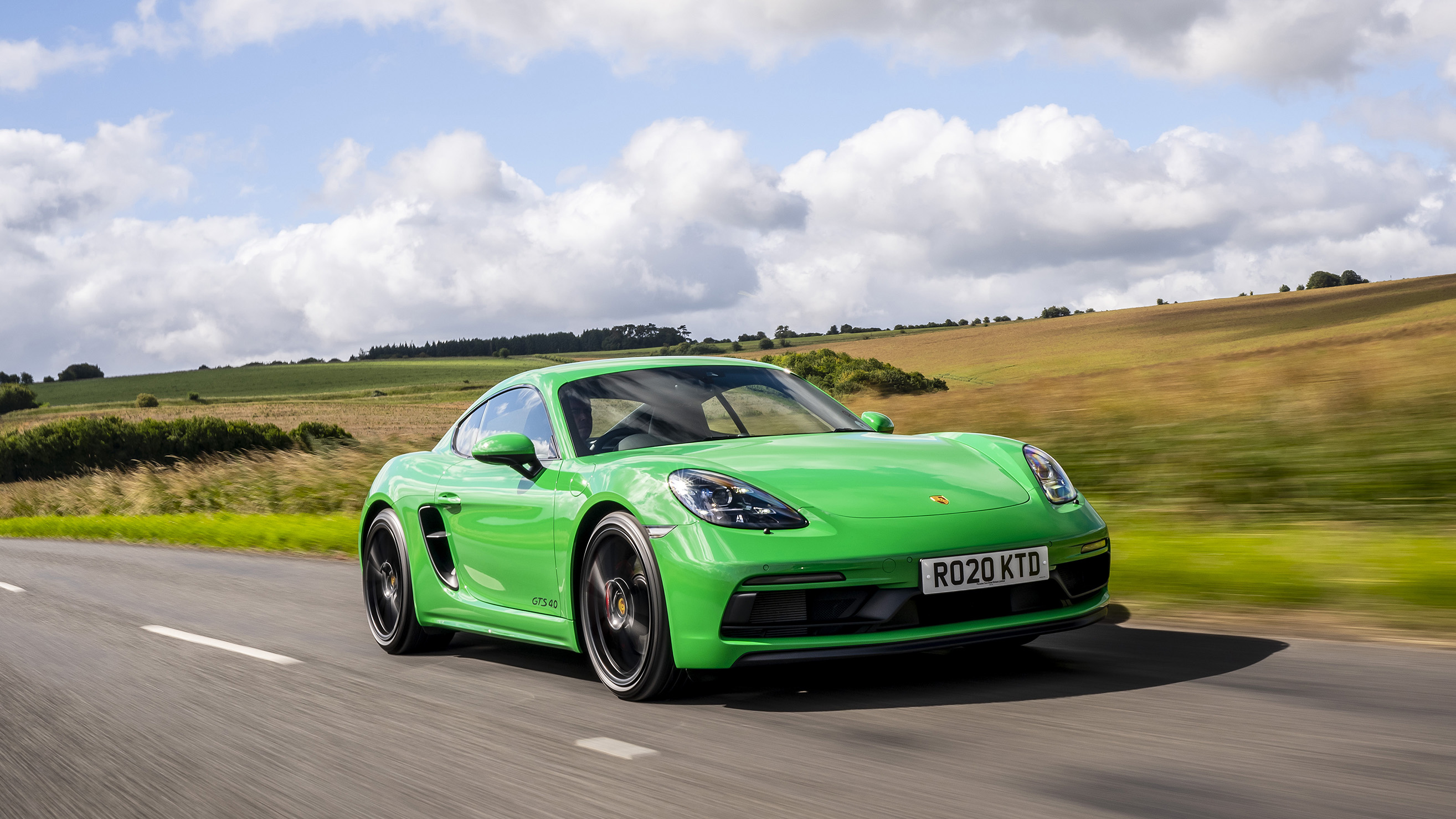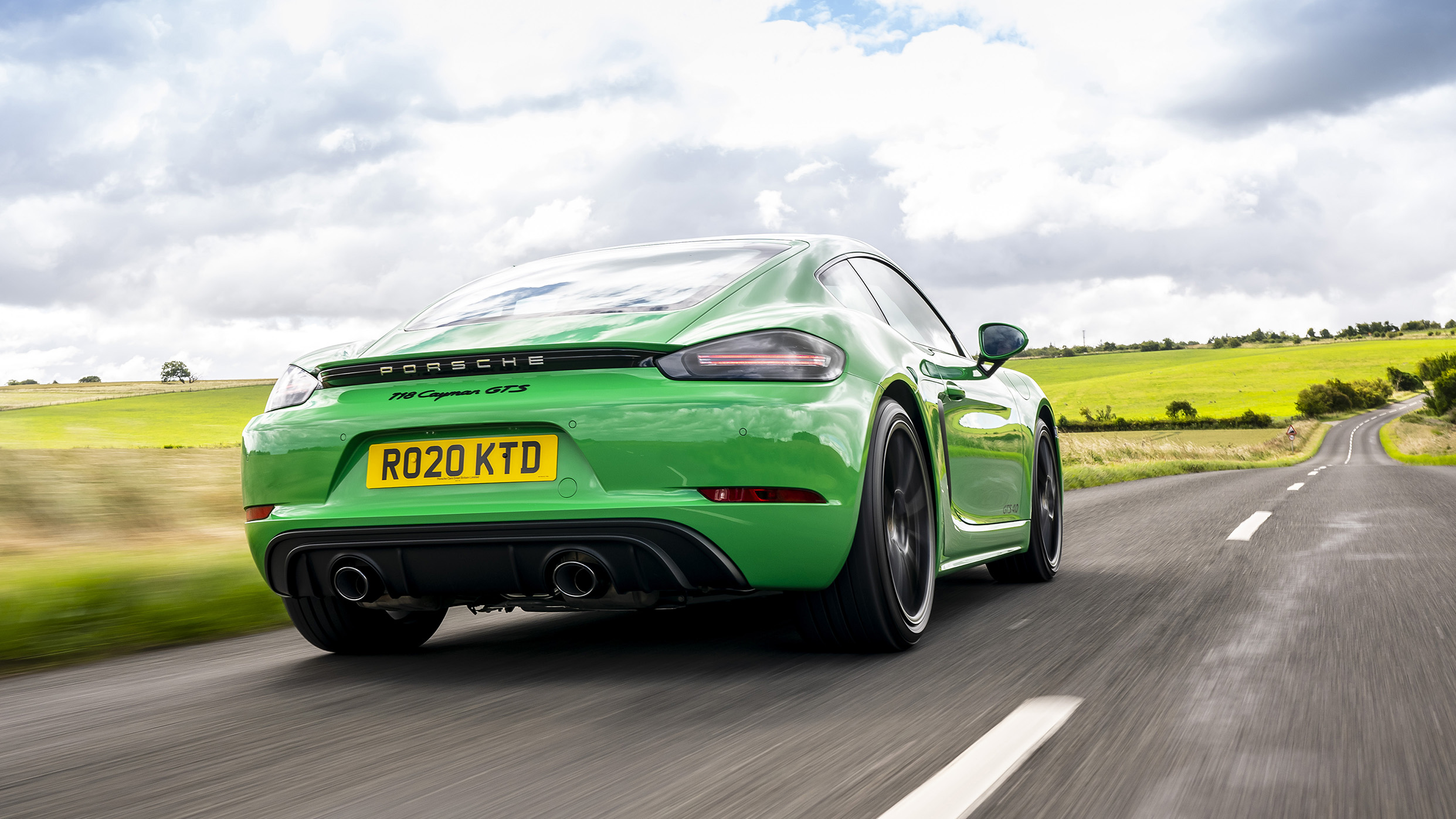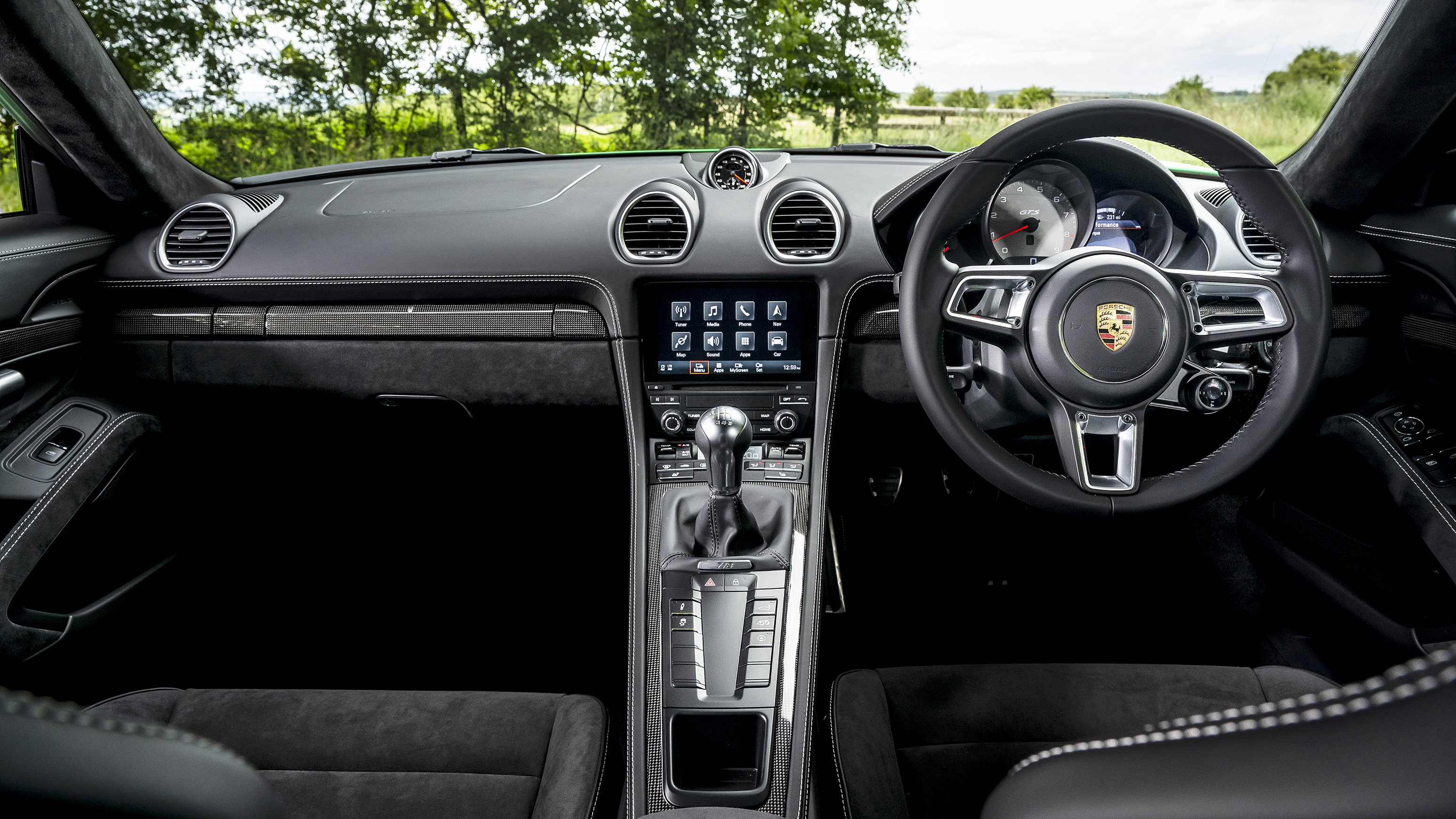
Driving
What is it like to drive?
Obviously the engine’s a peach. What’s pleasantly surprising is you’d never guess this is a detuned, watered-down version of a hotter motor. In some cars, you sense the moment when the on-board computer interrupts the mechanics and tells the engine to calm down, and know its place. Not here. It pulls clean and true to a pretty orgasmic 7,800rpm redline.
If you’ve been in one of the turbo’d Caymans lately, suddenly having to concentrate and work for your performance might seem a bit alien. A tad inconvenient, even. The old 2.5-litre GTS dumped 310lb ft in your lap at 2,100rpm. With the 4.0-litre GTS, you’re hanging on until 5,500rpm for the same peak torque.
This engine has a totally different – better – character. Instead of mashing the throttle and waiting for the turbo to haul you out of (or into) jail, you have to roll up your sleeves and go looking for that urgency. And boy is it worth it.
We forget how ‘old-school’ naturally aspirated engines sound interesting everywhere in the rev range, and at different throttle openings. Nerdy, I know, but stick with me.
A lot of modern fast cars only give their best Pavarotti when they’re charging flat out. This GTS chatters with intent at idle, chunters moodily at low revs, and then builds from a mournful, barrel-chested growl to a baleful howl as the needle winds around to 3 o’clock. It sounds wonderful all the time. And you get plenty of that addictive note piped into the cabin too, even with the sports exhaust turned off to keep the neighbours on side. At a cruise, it melts away politely.
Our test car featured the manual gearbox, and while it’s a mechanical joy to operate, the same old Cayman bugbear of long gearing remains. Great for fuel economy, true, but the engine already switches off half a bank of cylinders to save petrol, and it means getting up into the engine’s stratosphere is a rarer treat than it should be. Why does a Cayman need to be able to break the national speed limit in second?
You can ramp up the engine response (and gearbox attitude, if you’ve specced the PDK auto) using the rotary selector on the steering wheel. The sporty damper setting is best left for racetracks – British roads are too cracked to deploy it without the Cayman losing its trademark flow and composure. Otherwise, this is a very comfortable sports car. You could easily use it every day, motorway road noise being the Cayman’s main vice.
At 1,405kg the GTS is in fact 15kg lighter than a Cayman GT4. About as noticeable as the 20bhp power deficit, really. This is a beautifully balanced car – you really sense the car working all four tyres equally hard. It gives you confidence, and while it’s never a yobbo unless massively provoked, it’s got that rarest of qualities: fun factor at sensible speeds. You’re never going to trouble this mighty, grippy chassis on the public highway, but you can revel in the perfectly weighted steering, the accurate turn-in, the way the car pivots around the seat of your pants, and the mega traction. Ultimately, it’s very flattering, And who doesn’t like the idea they’re a great driver?
The GTs just feels ‘enough’. There are faster sports cars. There are sports cars that can corner harder and slide more easily and dazzle you with more modes and gimmicks. But after driving this, that’ll all seem overblown.
Featured

Trending this week
- Car Review
BMW 1 Series
- Top Gear's Top 9
Nine dreadful bits of 'homeware' made by carmakers






